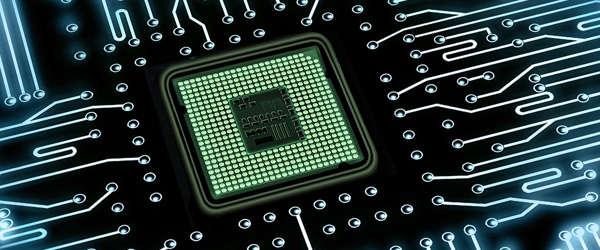A novel crystalline form of silicon could be used to develop next-generation electronic and energy devices. A team led by Carnegie’s Thomas Shiell and Timothy Strobel developed a new method for synthesizing a novel crystalline form of silicon with a hexagonal structure that could potentially be used to create next-generation electronic and energy devices with enhanced properties that outperform the “normal” cubic form of silicon currently used.
Their work is published in Physical Review Letters.
Silicon has a disproportionate impact on human life. It is the second most abundant element in the crust of the Earth. It is necessary for many construction and infrastructure projects when combined with other elements. In its most basic form, it is so important to computing that the long-standing technological hub of the United States, California’s Silicon Valley, was named after it.
For the past decade, silicon power technology has enabled the explosion in consumer and industrial electronics — but that technology has now stalled. Power conversion systems are an essential part of all electronics. The evolution of power systems from heavy, bulky, and inefficient analog devices to compact, energy-saving switching devices aided in the development of sophisticated electronic systems. Silicon power transistors were central to these next-generation systems.
A team developed a new method for synthesizing a novel crystalline form of silicon with a hexagonal structure that could potentially be used to create next-generation electronic and energy devices with enhanced properties that exceed those of the ‘normal’ cubic form of silicon used today.
Silicon, like all elements, can exist in various crystalline forms known as allotropes, just as soft graphite and super-hard diamond are both forms of carbon. The most common form of silicon used in electronic devices, such as computers and solar panels, has the same structure as diamond. Despite its widespread use, this type of silicon is not fully optimized for next-generation applications such as high-performance transistors and some photovoltaic devices.
While many different silicon allotropes with enhanced physical properties are theoretically possible, only a few exist in practice due to a lack of currently accessible synthetic pathways.
While hexagonal forms of silicon have previously been synthesized, this has only been done through the deposition of thin films or as nanocrystals that coexist with disordered material. The newly demonstrated Si24 pathway, on the other hand, provides the first high-quality bulk crystals, while the 4H-Si structure opens up new possibilities for semiconductor devices.

Strobel’s lab had previously developed Si24, a revolutionary new form of silicon with an open framework made up of a series of one-dimensional channels. Shiell and Strobel led a team that used Si24 as the starting point for a multi-stage synthesis pathway that resulted in highly oriented crystals known as 4H-silicon, so named because of its four repeating layers in a hexagonal structure.
“Interest in hexagonal silicon dates back to the 1960s, due to the possibility of tunable electronic properties that could improve performance beyond the cubic form,” Strobel explained.
Hexagonal forms of silicon have previously been synthesized, but only as thin films or as nanocrystals coexisting with disordered material. The newly demonstrated Si24 pathway yields the first high-quality bulk crystals, which will serve as the foundation for future research.
The group was able to understand the transition mechanism from Si24 to 4H-Si, as well as the structural relationship that allows the preservation of highly oriented product crystals, by using the advanced computing tool PALLAS, which was previously developed by members of the team to predict structural transition pathways (such as how water becomes steam when heated or ice when frozen).
“The discovery of bulk 4H-silicon crystals opens the door to exciting future research prospects for tuning the optical and electronic properties through strain engineering and elemental substitution,” Shiell said. “We could potentially use this method to grow large volumes of the 4H structure with properties that could exceed those of diamond silicon.”
The researchers hope that their findings will spur further research into scaling up and producing usable devices, and they now intend to conduct detailed characterization to gain a better understanding of the fundamental optoelectronic and mechanical properties of the 4H structure.












